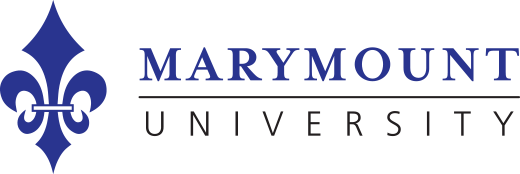4 Ways to Improve Organizational Leadership in Education

Blog Updated on December 19, 2024.
The past several years have highlighted the need for competent organizational leadership in education. Students are facing learning losses, virtual learning burnout and day-to-day uncertainty surrounding their education.
At the university level, 49% of college students report that they are experiencing symptoms of depression and anxiety. And the fallout from what became known as the “great resignation” — more than 300,000 educators left their jobs between February 2020 and May 2022 — is still affecting the field of education.
While schools and universities may be the first places that people think of when it comes to the need for educational leadership, many other types of institutions, organizations and professional settings can benefit from strong organizational leadership rooted in educational philosophy as well. Organizational leadership at its core is about empowering individuals to meet a common goal or achieve a mission.
As professionals in organizations in both the public and private sectors try to make decisions about everything from remote work policies to addressing social justice issues as an organization, strong leadership skills can make all the difference. Earning an advanced degree in education can prepare professionals to lead and help them in their career progression.
Consider these four ways to improve organizational leadership in education, whether that education takes place in an elementary school, university, nonprofit organization or company.
Complete The Form to Access Your Online Ed.D. Program Guide
4 Tips for Organizational Leaders in Education to Know
Effective organizational leaders in education must continuously grow and adapt to meet the evolving needs of their institutions. Professional development plays a crucial role in honing leadership skills, fostering collaboration and driving meaningful change. This section explores key tips as well as challenges for educational leaders to address to enhance their impact and guide their teams toward success.
1. Prioritize Ongoing Learning as an Institution
An organizational culture that values innovation, imagination and invention can foster a sense of collaboration that benefits whole teams and the institution itself. Educational organizations need leaders who take steps toward creating a culture that values attaining and implementing new knowledge.
An organization that prioritizes learning has several key elements, including:
- Systems thinking: seeking to understand how the whole picture is affected by every individual action
- Personal mastery: offering professional development for employees that allows them to be active learners and participants
- Team learning: building a culture of continuous improvement that encourages creativity and constructive criticism
In an educational setting, striving to create a learning organization may look like a principal who invites teachers to speak on policies or procedures that may have worked years ago but are no longer working for the needs of the present. It may look like a superintendent who hosts regular roundtables with seasoned teachers to discuss what they are seeing in the classroom and how the district can better serve students and teachers.
At the college or university level, a learning organization may look like an administrator who implements departmental policies that give employees the time, resources and encouragement they need to participate in continuing education courses that will give them greater insight into today’s college students.
A nonprofit or corporate leader may build an in-house mentorship or coaching program to ensure that individuals’ skills are identified, cultivated and leveraged for the good of all.
Of course, one of the greatest ways to build a learning organization is to model lifelong learning. Through reading, attending educational events and encouraging constructive dialogue, organizational leaders can build a model for their teams to follow.
2. Promote Digital Transformation in Higher Education
One of the key roles of organizational leadership in education is ensuring that students’ needs are clearly understood and met. In today’s academic landscape, institutions of higher education need to have a strategic approach to technology to give students the best academic experience possible. With a clear vision of opportunities for digital transformation in their institution, educational leaders can not only empower their students to be technologically savvy but address important issues in education like accessibility and customization.
Here are just two examples of successful initiatives that have taken place at the intersection of education, organizational leadership and technology:
- One university used predictive modeling to improve its student retention rate. The university’s efforts, which included identifying at-risk students and creating programs to facilitate early interventions, raised the graduation rate of four-year undergraduate students by 5% in two years.
- An engineering professor leveraged technology to build an artificial intelligence (AI)-powered learning community that has driven students’ satisfaction with the class up to 99%.
For modern organizational leaders in education, an openness to technological development and innovation is key to forward progress.
3. Pursue Clarity and Unity With the Best Change Management Strategies
Whether it is an event as drastic as a school lockdown due to a pandemic or something much more ordinary such as a new substitute teacher in the building, organizational leaders in education need to have a solid grasp on how to manage change. This entails all the efforts required to guide a school or school district through a transition.
One of the first steps in leading change is deciding what kind of change the organization needs. While some changes cannot be prevented or chosen and must instead be reacted to or responded to, many others are intentional choices made by leaders. Skilled organizational leaders will leverage their systems thinking, their collaborative approach and the knowledge they have gathered to determine when a change needs to be made — and, then, how.
From students to the most seasoned of faculty, every affected person will have their own response to a change. Some people will be excited about the change, others will be happy to go with the flow, others will resist the change simply because they are more comfortable with the status quo and still others will disagree specifically with the change itself. Organizational leaders in education will need to cultivate their communication — and likely their conflict-resolution — skills to guide individuals, teams and their entire school or organization through a change.
4. Put Students First With Leadership in Schools That Elevates Student Outcomes
Research has long shown that principals have an impact on their students’ achievement. However, recent studies have shown that their effect is more significant than once thought.
For example, a Wallace Foundation study that looked at two decades of research found that if a principal ranked in the 75th percentile for effectiveness replaces a principal ranked in the 25th percentile, students’ learning in reading and writing increases by about three months. That is nearly as great an increase as the four months of increased learning seen when a teacher in the 75th percentile replaces one in the 25th percentile. However, at the principal level, this increase occurs across the entire school rather than within one classroom.
At the district level, this research shows that superintendents can also influence student outcomes through:
- Providing research-based curriculum planning, development and design procedures
- Ensuring that materials, facilities and funding are provided for teachers to achieve district goals
- Budgeting and planning spending in ways that facilitate curriculum goals and provide professional development to teachers who are responsible for curriculum implementation
By making strategic, professional development decisions, education leaders at every level can positively influence their students’ outcomes and success.
Prepare to Promote Organization Leadership in Education
In organizations that range from junior high schools to educational technology companies, professionals who are well-versed in organizational leadership are needed.
Take Jessica Burns-Turch, a former student who had been enrolled in Marymount University’s Doctor of Education in Educational Leadership and Organization Innovation program, for example. Burns-Turch is a former classroom teacher who is now .
“How did I go from the funeral industry to working on a doctorate in educational leadership?” says Burns-Turch. “Both in education and in the business world, I’ve seen a lack of strong leadership and strong leadership platforms. So I started looking for a program to both strengthen my leadership skills as a business owner and provide me with the necessary tools to educate other leaders as a professor at the collegiate level.
“Coupled with my experience in education and the business world, this Ed.D. will provide me with the necessary platform to effect change in leadership practices and policies.”
Whether you want to make a difference in your organization or your community, pursuing an online Ed.D. in Educational Leadership and Organizational Innovation can empower you as a change agent ready to initiate and inspire. This degree program can help you lead change in the workplace as a teacher or professional in different contexts, including communities, schools, governments or health care organizations.
Connect with an enrollment adviser to get started.
Complete The Form to Access Your Online Ed.D. Program Guide
Trying to Decide Between Pursuing an Ed.D. or a PhD? Be Sure to Read:
